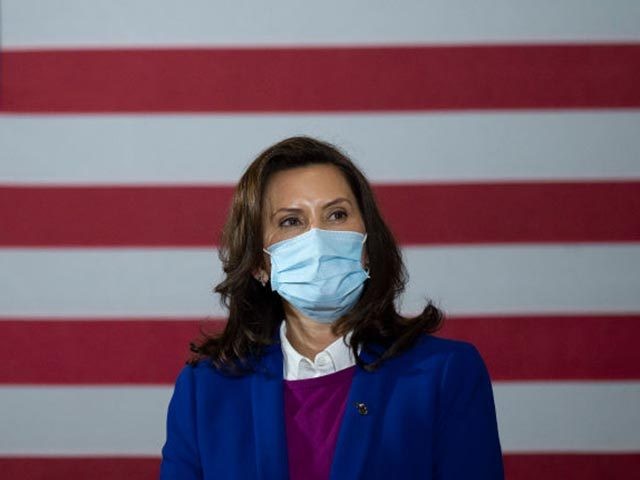Michigan suffered more in economic and social costs than it gained in safety when Gov. Gretchen Whitmer (D) locked the state down for a second time in late 2020.
Michigan Capitol Confidential reported a study in which University of Michigan-Flint economic professor Chris Douglas found Whitmer’s so-called “Pause to Save Lives” was “inconsistent with guidelines issued by the Centers for Disease Control and Prevention and had no perceptible effect on [coronavirus] fatality rates.”
The report, titled, “The Costs of Michigan’s Second Lockdown,” published by the Mackinac Center for Public Policy, said, “Michigan’s employment losses in restaurants and bars were by far the largest in the Midwest from fall 2020 through early winter 2021. Jobs in the sector decreased by 23% from October through January, representing more than 64,000 jobs.”
In the weeks following the November 18 lockdown — which Whitmer claimed would only last three weeks — hospitality industry jobs plunged by 49.6 percent.
The second-worst state in the Midwest region was Pennsylvania, which lost 21.2 percent of hospitality jobs.
Michigan’s neighbor, Indiana, which did not implement such restrictive policies, lost less than one percent of hospitality jobs that month.
Douglas noted data on daily coronavirus fatality trends “do[es] not seem to show a connection between shutdowns and a reduction in deaths.”
The report analyzed the 7-day moving average of daily coronavirus fatalities in the Great Lakes States of Illinois, Indiana, Michigan, Ohio, Pennsylvania, and Wisconsin. It showed Michigan followed the trend of the other states, suggesting it was a cyclical spread, not impacted by attempted limitations.
Despite the mid-November lockdown, Michigan still averaged more deaths than Ohio and Wisconsin.
Whitmer’s orders repeatedly made bars and restaurants the culprit for spread, but the data does not seem to back up that focus:
What limited contact tracing data is publicly available indicates that few COVID-19 infections can be traced to the small businesses that were closed due to pandemic policies, such as bars and restaurants. Data released by the state of New York found that 74% of infections there were traced to household and social gatherings. Only 1.4% were traced to bars and restaurants and only 0.06% were traced to gyms. According to the Jan. 16, 2021, update from the Minnesota Department of Health, only 4% of cases can be traced to “community outbreak,” a category which includes, but is not exclusive to, bars and restaurants.
Data reported by the Michigan Department of Health and Human Services (MDHHS) shows a similar pattern. Historical data does not appear to be available on the state’s website, but it is available through the Internet Archive’s Wayback Machine. According to MDHHS data from Oct. 22, 2020, five of the 144, or 3%, of cases reported that day were traced to a bar or restaurant and only seven of the 302 ongoing cases, or 2%, were traced to a bar or restaurant.
Whitmer has not given up on making bars and restaurants the target. During a press conference last week, the governor urged voluntary, self-imposed restrictions and singled out indoor dining as an activity Michiganders should forego.
“It is questionable, at best, whether these shutdown orders have delivered benefits in addition to what could have been achieved through less costly public health interventions that were previously recommended by public health agencies such as the CDC and WHO,” the report concluded.
Kyle Olson is a reporter for Breitbart News. He is also host of “The Kyle Olson Show,” syndicated on Michigan radio stations on Saturdays–download full podcast episodes. Follow him on Parler.

COMMENTS
Please let us know if you're having issues with commenting.